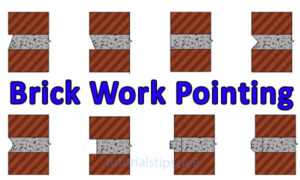Exploring the Environmental Impact of Open-cut and Underground Mining
Environmental Impact of Open-cut and Underground Mining

Mining is a crucial industry that plays a significant role in providing essential resources for various sectors of the economy. However, it is important to consider the environmental impact of different mining methods, particularly when comparing open-cut and underground mining methods. Two commonly used methods are open-cut mining and underground mining. These methods have distinct characteristics and varying effects on the environment. In this article, we will delve into the environmental implications of both open-cut and underground mining methods.
To understand the differences between open-cut and underground mining, it is important to consider their operational processes.
Open-Cut Mining:
Open-cut mining, also known as open-pit or surface mining, is a method that involves excavating a large pit or borrowing to extract minerals or ore from the earth’s surface. This technique allows for the removal of valuable resources that are located close to or near the surface. However, open-cut mining can result in significant land disturbance and visual impacts, as well as potential water pollution if proper measures are not taken to manage runoff and sedimentation.
Underground Mining:
On the other hand, underground mining is a method of extracting minerals from beneath the surface by constructing tunnels and shafts to access the deposits. This approach is typically employed when valuable resources are located deeper underground or when the deposit size and characteristics make open-cut mining impractical. Underground mining reduces the visible impact on the surface and helps protect the surrounding environment. However, it can still pose challenges such as the potential for groundwater contamination and the need for proper ventilation and safety measures to ensure the well-being of miners.
Now, we will explore the environmental impacts associated with both open-cut and underground mining methods.
Land Disturbance
The land disturbance is a significant concern in mining operations. Open-cut mining typically requires the removal of large amounts of soil and rock, leading to substantial land clearing and alteration of the landscape. In contrast, underground mining has a smaller surface footprint as the majority of the operations occur beneath the surface. This characteristic of underground mining helps minimize land disturbance and the associated impacts on ecosystems.
Waste Generation
Waste generation is another important aspect to consider. Open-cut mining often generates significant amounts of waste rock and overburden, which are typically stored in large piles or waste dumps. These waste materials can pose challenges in terms of erosion control and potential contamination of surrounding soil and water bodies. In contrast, underground mining generates less waste rock as the extracted ore is directly transported to the surface. However, underground mining does produce tailings, which are the leftover materials after ore processing. Proper management and containment of these tailings are crucial to prevent potential environmental pollution.
Water Usage
Water usage poses a significant concern in mining operations, especially in regions where water resources are scarce. Open-cut mining methods necessitate substantial amounts of water for mineral processing and dust suppression. This high water demand can strain local water sources, resulting in decreased water availability for both ecosystems and nearby communities. In contrast, underground mining typically requires less water since ore processing occurs underground, reducing the reliance on extensive water usage. This disparity highlights the varying environmental implications of open-cut and underground mining methods concerning water resources and emphasizes the importance of water conservation strategies in mining practices.
Air Pollution

Air pollution is an inevitable consequence of mining activities. Dust emissions from open-cut mining operations can result in air pollution, affecting both human health and the environment. Additionally, the use of explosives and heavy machinery in open-cut mining can contribute to noise pollution. Underground mining, although it also generates dust and noise, tends to have lower emissions compared to open-cut mining due to the containment provided by underground tunnels.
Biodiversity Loss
Biodiversity loss is a significant concern in mining operations, as they often occur in ecologically diverse regions. Open-cut mining can lead to the direct destruction of habitats, displacing flora and fauna. The clearing of large areas of land can disrupt ecosystems, resulting in the loss of biodiversity. In contrast, underground mining has a smaller footprint and can help preserve habitats on the surface. However, it is important to note that underground mining can still impact biodiversity indirectly through the release of pollutants and potential subsidence.
It is essential to mention that mining companies are increasingly implementing various measures to mitigate the environmental impact of their operations. These measures include progressive rehabilitation, where land is reclaimed and restored as mining progresses, and the implementation of technologies to minimize water usage and air emissions. Environmental impact assessments and monitoring programs also play a crucial role in identifying and addressing potential environmental risks associated with mining activities.
Final Thoughts
Both open-cut and underground mining methods have distinct environmental implications. Open-cut mining often results in significant land disturbance, waste generation and water usage, while underground mining has a smaller surface footprint but still generates waste and consumes resources. Open-cut mining can lead to the direct destruction of habitats and biodiversity loss, while underground mining has a comparatively smaller impact on surface ecosystems. However, underground mining can still contribute to air and water pollution.
 |
 |
 |
 |
 |
 |
 |
 |
 |



